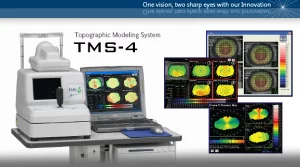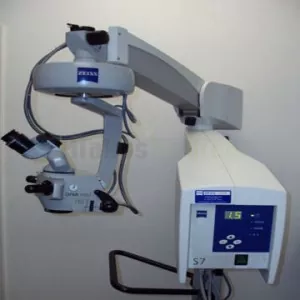Diabetes Related Eye Problems

You can do a lot to prevent diabetes eye problems.
Keep your blood glucose and blood pressure as close to normal as you can.
Have an eye care professional examine your eyes once a year. Get this examination even if your vision is OK. The eye care professional will use drops to make the black part of your eyes-pupils-bigger. This process is called dilating your pupil, which allows the eye care professional to see the back of your eye. Finding eye problems early and getting treatment right away will help prevent more serious problems later on.
Ask your eye care professional to check for signs of cataract & glaucoma. See if you are planning to get pregnant soon, ask your doctor if you should have an eye exam.
If you are pregnant and have diabetes, see an eye care professional during your first 3 months of pregnancy.
Don’t smoke.
Diabetes problems
Too much glucose in the blood for a long time can cause diabetes problems. This high blood glucose, also called blood sugar, can damage many parts of the body, such as the heart, blood vessels, eyes, and kidneys. Heart and blood vessel disease can lead to heart attacks and strokes. You can do a lot to prevent or slow down diabetes problems.
Staying healthy with diabetes

- Healthy food.
- 30 minutes exercise
- Regular medicines
- Regular blood glucose checking
- Check your feet everyday for cuts, bruises
- Daily brush & floss teeth d3
- Blood pressure control
- Don’t smoke
- Blood cholesterol control


Diabetes can cause problems in your eyes
High blood glucose and high blood pressure from diabetes can hurt four parts of your eye:
Retina. The retina is the lining at the back of the eye. The retina’s job is to sense light coming into the eye.
Vitreous. The vitreous is a jelly-like fluid that fills the back of the eye.
Lens. The lens is at the front of the eye. The lens focuses light on the retina.
Optic nerve. The optic nerve is the eye’s main nerve to the brain.
Retina problems because of diabetes
Retina damage happens slowly. Your retinas have tiny blood vessels that are easy to damage. Having high blood glucose and high blood pressure for a long time can damage these tiny blood vessels.
d5First, these tiny blood vessels swell and weaken. Some blood vessels then become clogged and do not let enough blood through. At first, you might not have any loss of sight from these changes. Have a dilated eye exam once a year even if your sight seems fine.
One of your eyes may be damaged more than the other. Or both eyes may have the same amount of damage.
Diabetic retinopathy is the most common diabetes eye problem.

Consequences of Diabetes effects becoming worse such as:
New blood vessels grow.
New blood vessels are weakand leak blood into the vitreous of your eye.
The leaking blood keeps light from reaching the retina.
You may see floating spots or almost total darkness. Sometimes the blood will clear out by itself. But you might need surgery to remove it.
Over the years, the swollen and weak blood vessels can form scar tissue and pull the retina away from the back of the eye. If the retina becomes detached, you may see floating spots or flashing lights.
Different efforts which can reduce the chances of retinal problems
Keep your blood glucose and blood pressure as close to normal as you can.
Your eye care professional may suggest laser treatment, which is when a light beam is aimed into the retina of the damaged eye. The beam closes off leaking blood vessels. It may stop blood and fluid from leaking into the vitreous. Laser treatment may slow the loss of sight.
If a lot of blood has leaked into your vitreous and your sight is poor, your eye care professional might suggest you have surgery called a Vitrectomy.
Vitrectomy removes blood and fluid from the vitreous of your eye. Then clean fluid is put back into the eye. The surgery can make your eyesight better.
Symptoms of diabetes caused retinal problems
You may not have any signs of diabetes retina damage, or you may have one or more signs:
Blurry or Double vision
Rings, Flashing Lights, or Blank Spots
Dark or Floating Spots
Pain or Pressure in one or Both of your eyes
Trouble seeing things out of the corners of your eyes
If you have retina damage from diabetes, you may have blurry or double vision.
